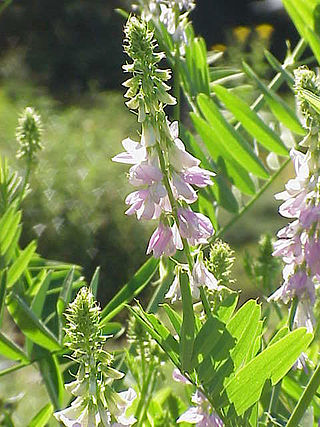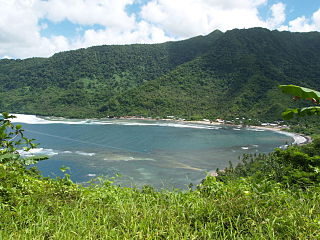Related Research Articles

Environmental laws are laws that protect the environment. Environmental law is the collection of laws, regulations, agreements and common law that governs how humans interact with their environment. This includes environmental regulations; laws governing management of natural resources, such as forests, minerals, or fisheries; and related topics such as environmental impact assessments. Environmental law is seen as the body of laws concerned with the protection of living things from the harm that human activity may immediately or eventually cause to them or their species, either directly or to the media and the habits on which they depend.

Natural resources are resources that are drawn from nature and used with few modifications. This includes the sources of valued characteristics such as commercial and industrial use, aesthetic value, scientific interest, and cultural value. On Earth, it includes sunlight, atmosphere, water, land, all minerals along with all vegetation, and wildlife.

Bioprospecting is the exploration of natural sources for small molecules, macromolecules and biochemical and genetic information that could be developed into commercially valuable products for the agricultural, aquaculture, bioremediation, cosmetics, nanotechnology, or pharmaceutical industries. In the pharmaceutical industry, for example, almost one third of all small-molecule drugs approved by the U.S. Food and Drug Administration (FDA) between 1981 and 2014 were either natural products or compounds derived from natural products.

Savaiʻi is the largest and highest island both in Samoa and in the Samoan Islands chain. The island is also the sixth largest in Polynesia, behind the three main islands of New Zealand and the Hawaiian Islands of Hawaii and Maui. While it is larger than the second main island, Upolu, it is significantly less populated.

Cananga odorata, known as ylang-ylang or cananga tree, is a tropical tree that is native to the Philippines, Malaysia, Indonesia, New Guinea, the Solomon Islands, and Queensland, Australia. It is also native to parts of Thailand and Vietnam. It is valued for the essential oils extracted from its flowers, which has a strong floral fragrance. Ylang-ylang is one of the most extensively used natural materials in the perfume industry, earning it the name "Queen of Perfumes".

Medicinal plants, also called medicinal herbs, have been discovered and used in traditional medicine practices since prehistoric times. Plants synthesize hundreds of chemical compounds for various functions, including defense and protection against insects, fungi, diseases, and herbivorous mammals.

Calophyllum inophyllum is a large evergreen plant, commonly called tamanu, oil-nut, mastwood, beach calophyllum or beautyleaf. It is native to tropical Asia and Wallacea. Due to its importance as a source of timber for the traditional shipbuilding of large outrigger ships, it has been spread in prehistoric times by the migrations of the Austronesian peoples to the islands of Oceania and Madagascar, along with other members of the genus Calophyllum. It has since been naturalized in regions in the East African coast. It is also a source of the culturally important tamanu oil.

Intsia bijuga, commonly known as Borneo teak, Johnstone River teak, Kwila, Moluccan ironwood, Pacific teak, scrub mahogany and vesi, is a species of flowering tree in the family Fabaceae, native to the Indo-Pacific. It ranges from Tanzania and Madagascar east through India and Queensland, Australia, Papua New Guinea to the Pacific islands of Fiji and Samoa. It grows to around 50 metres tall with a highly buttressed trunk. It inhabits mangrove forests. Intsia bijuga differ from Intsia palembanica in the number of leaflets that make up their compound leaves.

Seacology is a nonprofit 501(c)(3) charitable organization headquartered in Berkeley, California, that works to preserve island ecosystems and cultures around the world. Founded in 1991, it began with the work of ethnobotanist Paul Alan Cox, who researched tropical plants and their medicinal value in the village of Falealupo in Samoa during the mid-1980s. When the villagers were pressured into selling logging rights to their rainforest in 1988 to build a new school, Cox and his wife offered to help secure funds for the new school in return for an agreement with the villagers to protect their forest. With the help of his friends and family, Cox secured the funds within six months, later earning him and the village chief, Fuiono Senio, the Goldman Environmental Prize for their efforts. Word spread throughout the islands, and with increasing demand for similar projects, Cox, along with Bill Marré and Ken Murdock, decided to form Seacology and expand their work internationally. For the first few years, the organization operated on a volunteer basis.

Papua New Guinea together with the West Papua region of Indonesia make up a major tropical wilderness area that still contains 5% of the original and untouched tropical high-biodiversity terrestrial ecosystems. PNG in itself contains over 5% of the world's biodiversity in less than 1% of the world's total land area. The flora of New Guinea is unique because it has two sources of origin; the Gondwana flora from the south and flora with Asian origin from the west. As a result, New Guinea shares major family and genera with Australia and the East Asia, but is rich in local endemic species. The endemicity is a result of mountainous isolation, topographic and soil habitat heterogeneity, high forest disturbance rates and abundant aseasonal rainfall year round. PNG boasts some 15–21,000 higher plants, 3,000 species of orchids, 800 species of coral, 600 species of fish, 250 species of mammals and 760 species of birds and 8 species of tree-kangaroos out of which 84 genera of animals are endemic. Ecosystems range from lowland forests to montane forests, alpine flora down to coastal areas which contains some of the most extensive pristine mangrove areas in the world. Much of this biodiversity has remained intact for thousands of years because the ruggedness of the terrain made the interior lands inaccessible; furthermore low population density and restrictions on the effectiveness of traditional tools, ensured that these biodiversity was never overexploited.

Uafato is a village on the north east coast of Upolu island in Samoa within the political district of Va'a-o-Fonoti. It has a population of 254. The village is part of a conservation zone called the Uafato Conservation Area with national and global significance as a unique cultural and conservation area.
Today, forest and woodland cover in Uganda stands at 49,000 km² or 24% of the total land area. Of these 9,242.08 km² is tropical rainforest, 350.60 km² are forest plantations and 39,741.02 km² is woodland. 30% of these areas are protected as national parks, wildlife reserves or central forest reserves.
Jimbu is a herb belonging to the onion family, used extensively in some regions of Nepal and in some central Himalayan states of India, like Uttarakhand, where it is called Jamboo or Faran. It is composed of two species of Allium, A. hypsistum and A. przewalskianum. The herb, which has a taste in between onion and chives, is most commonly used dried. In the Mustang district of Nepal and Kumaon region of Uttarakhand, it is used to flavor vegetables, pickles, and meat. In the rest of Nepal it is most commonly used to flavor urad dal or lentils. The dried leaves are fried in ghee to develop their flavor. After harvest, people store Jimbu dried for later use since it is a seasonal herb.

The environment of Malaysia is the biotas and geologies that constitute the natural environment of Malaysia. Malaysia's ecology is megadiverse, with a biodiverse range of flora and fauna found in various ecoregions throughout the country. Tropical rainforests encompass between 59% and 70% of Malaysia's total land area, of which 11.6% is pristine. Malaysia has the world's fifth largest mangrove area, which totals over a half a million hectares.

The Samoan tropical moist forests are a tropical moist broadleaf forest ecoregion in the Samoan Islands of the Pacific Ocean.
Terminalia richii, with the common name malili, is an upright forest tree species native to the central South Pacific in Oceania.
Wayne Arthur Whistler was an American ethnobotanist, academic and writer. Whistler, an adjunct professor at the University of Hawaii's Department of Botany, was an expert on tropical flora of the Pacific Islands, especially Samoa and Tonga.

O Le Pupu-Puʿe National Park is the oldest national park in Samoa. Established in 1978, the park covers 5019 hectares of the southern-central portion of the island of Upolu on the border of the Atua and Tuamasaga districts. The park extends from Mount Fito, the highest mountain on Uplou, to the coast, and includes uplands, valleys, marshes, the O Le Pupu lava field, and coastal cliffs. In 2016 it was designated as a wetland of international importance under the Ramsar Convention.
References
- ↑ Isle Botanica, Art Whistler (May 1999). "Guide to the most commonly used medicinal plants in Samoa" (PDF). American Samoa Community College Land Grant Program. Honolulu, Hawai'i. Retrieved 11 July 2010.
- ↑ Roger R. B. Leakey, Craig R. Elevitch, Isabella Aiona Abbott (2006). Traditional trees of Pacific Islands: their culture, environment, and use. Permanent Agriculture Resources. ISBN 978-0-9702544-5-0 . Retrieved 11 July 2010.
{{cite book}}: CS1 maint: multiple names: authors list (link) - ↑ "Traditional medicines still strong in Samoa". Ministry of Natural Resources and Environment, Samoa. Retrieved July 8, 2010.
